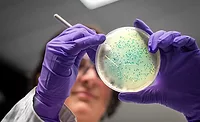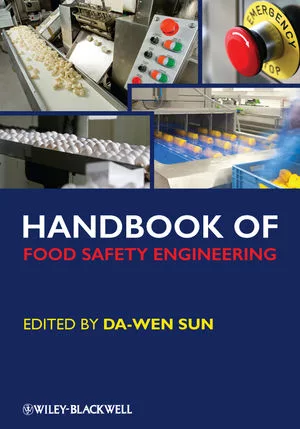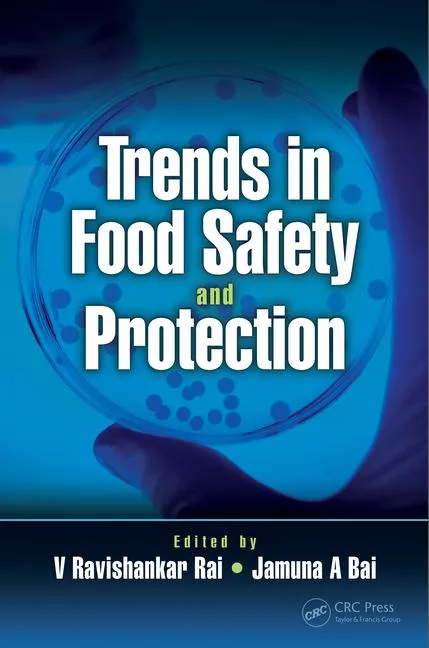Importance of Accurate Measurement of Cleaners and Sanitizers
Sanitation plays a critical role in the food safety industry. Proper sanitation is a key component to protecting food manufacturing facilities from introducing spoilage or pathogenic organisms to their products, surfaces and equipment. Cleaners and sanitizers must be accurately measured and correctly prepared to ensure they are effective. Too little sanitizer allows for the potential growth of these organisms, whereas too much sanitizer can act as an adulterant to the product and unnecessarily raise sanitation costs. There are several methods for measuring chemical concentrations, and the goal for quality assurance managers in each facility is to find the method that is the most accurate, efficient and cost-effective.
Test Strips
One commonly used method is test strips that, when placed in a prepared chemical solution, produce a color change based on the amount of active chemical in the solution. The test strip’s large incremental concentration values and visual color result create a lack of precision and variability in operator interpretation. Test results must be recorded, tracked and analyzed manually.
Chemical Titration Kits
The use of titration kits requires an arduous process of dispensing precise volumes of an indicator solution into a mixture of sanitizer and source water to produce a color change. A single drop or less can cause the indicator’s change in color, thus rendering the result of the test invalid, and the process must be repeated. Titration kits are laborious to operate and require calculations to determine the result, which must be manually recorded.
Chemical Injectors
Chemical vendors often supply customers with inline chemical injectors. These devices are installed in conjunction with the facility’s water lines to mix the sanitation chemical and water at a defined proportionate rate to create an “on-demand” homogeneous chemical mixture. Injectors typically require an intricate installation procedure and routine maintenance, halting the sanitation process. Independent test methods are required to verify the injectors are mixing at an appropriate rate and results must be manually recorded.
Conductivity
Another method of measuring chemical concentration levels is by testing the solution’s conductivity. The conductivity of an aqueous solution is determined by the concentration of ions in the solution. Measuring a solution’s conductivity and then comparing it to the conductivity of a known standard for that chemical allow for a quick and precise determination of the chemical’s concentration.
Our Solution
The LIGHTNING MVP® Hazard Analysis and Critical Control Points (HACCP) monitoring system from BioControl includes an optional probe that can be used to determine the precise concentration of a sanitizer or cleaner, helping to ensure they are being accurately prepared to clean and sanitize effectively.
The LIGHTNING MVP Conductivity Probe’s results are accurate to within five percent: five times more accurate than test strips or titration kits, which historically only provide ± 25% accuracy. This 20 percent gain in accuracy provides significant cost savings for a facility. Less sanitizer will be used due to inaccurate measurements, and expensive plant equipment will be spared the corrosive effects of excessively concentrated chemicals. Conversely, the probe ensures sanitizer concentration is sufficient to prevent the growth of microorganisms, protecting the consumer from foodborne illnesses. In turn, the manufacturer is kept safe by preventing outbreaks and protecting the product from premature spoilage, protecting the brand’s reputation and the company and its employees from liability.
Designed with an epoxy-based body, the probe is rugged, durable, requires little maintenance and is safe for use in food manufacturing plants. The probe automatically stores and records data that, when used in conjunction with the LIGHTNING MVP software, can be uploaded to a computer for tracking and trending analysis with a click of a button.
While there are several methods for determining sanitizer concentration, the most accurate, responsive, cost-effective and easiest for operator use is the LIGHTNING MVP Conductivity Probe. The ability to record, track and analyze data will allow managers to adhere to their HACCP and hygiene programs while reducing overhead costs.
For more information, please contact BioControl at 800.245.0113 or by e-mail at info@biocontrolsys.com.
www.biocontrolsys.com
Looking for quick answers on food safety topics?
Try Ask FSM, our new smart AI search tool.
Ask FSM →






